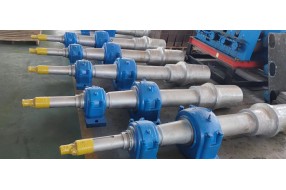News
The Role of Discharging Roller in Material Handling Systems
In the realm of material handling, the discharging roller plays a pivotal role in ensuring efficient and effective movement of goods. This crucial component is used in various industries, from manufacturing to logistics, facilitating the smooth transfer of materials. In this article, we’ll explore the function, benefits, and applications of discharging rollers in modern systems.
What is a Discharging Roller?
A discharging roller is a cylindrical device that aids in the movement of materials from one point to another, particularly during the unloading process. It is typically part of a conveyor system and can be found in various configurations, such as:- Idler Rollers: Support the conveyor belt and reduce friction.
- Drive Rollers: Provide the necessary force to move the belt.
- Return Rollers: Guide the belt back to the starting point after unloading.
Benefits of Using Discharging Rollers
Integrating discharging rollers into your material handling systems offers several advantages:1. Improved Efficiency
- Faster Unloading: Rollers enable quicker transfer of materials, reducing downtime during operations.
- Consistent Flow: Ensures a steady and reliable movement of products, enhancing overall productivity.
2. Reduced Wear and Tear
- Lower Friction: Rollers minimize friction between the conveyor and materials, decreasing wear on equipment.
- Longer Lifespan: Quality discharging rollers contribute to the longevity of conveyor systems, reducing maintenance costs.
3. Versatility
- Adaptable to Different Materials: Discharging rollers can handle various materials, from bulk items to packaged goods.
- Custom Configurations: Available in different sizes and designs to fit specific operational needs.
Applications of Discharging Rollers
Discharging rollers are utilized across numerous industries, showcasing their versatility and effectiveness:1. Manufacturing
- Assembly Lines: Used to transport products through different stages of production, ensuring timely delivery.
- Material Handling: Facilitate the movement of raw materials and finished products within factories.
2. Warehousing and Logistics
- Loading and Unloading: Essential for unloading goods from trucks and containers efficiently.
- Order Fulfillment: Help streamline the process of picking and packing orders for shipment.
3. Mining and Construction
- Bulk Material Transfer: Used for discharging materials like gravel, sand, and ores from conveyors to trucks or storage areas.
- Heavy-Duty Applications: Designed to withstand tough conditions and heavy loads common in these industries.
Choosing the Right Discharging Roller
When selecting a discharging roller, consider the following factors:1. Load Capacity
- Weight Considerations: Ensure the roller can handle the weight of the materials being transported.
2. Material and Design
- Durability: Choose rollers made from high-quality materials that can withstand the specific demands of your application.
- Surface Texture: Select the appropriate texture for optimal grip and material transfer.
3. Maintenance Requirements
- Ease of Maintenance: Look for rollers that are easy to clean and maintain, reducing downtime.
Conclusion
 The discharging roller is an essential component in material handling systems, contributing to efficiency, durability, and versatility across various industries. By understanding its role and benefits, businesses can optimize their operations and enhance productivity. Investing in high-quality discharging rollers will lead to smoother workflows and improved overall performance. Embrace the advantages of this vital equipment in your operations today!
The discharging roller is an essential component in material handling systems, contributing to efficiency, durability, and versatility across various industries. By understanding its role and benefits, businesses can optimize their operations and enhance productivity. Investing in high-quality discharging rollers will lead to smoother workflows and improved overall performance. Embrace the advantages of this vital equipment in your operations today!
.png?v=20260105)








